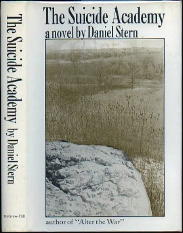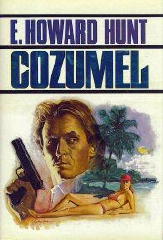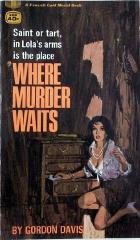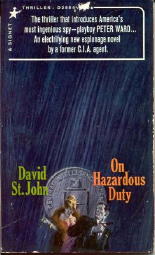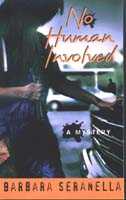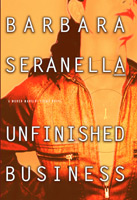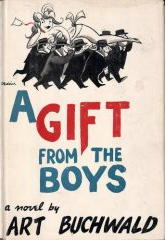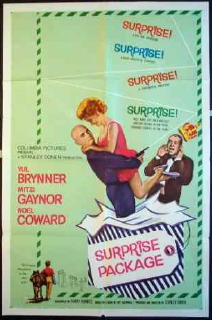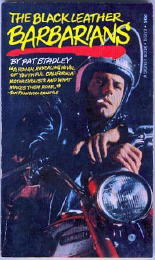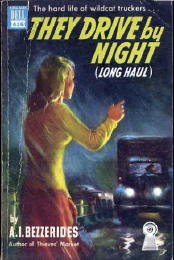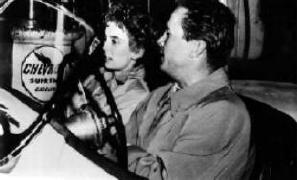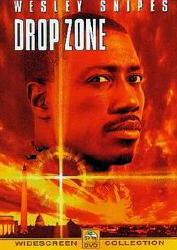Most of the online sites that will be running obituaries of E(verette) HOWARD HUNT (Jr.) this week will concentrate on one thing and one thing only, and that is his involvement in the Watergate matter, a true focal point in this nation’s history. You say Watergate, and to everyone in the US who was more than eight years old at the time, what memories it brings.
It was from Bill Crider’s blog that I learned the news of Mr. Hunt’s death (and Bill learned it from someone else), and the link he provides from Yahoo! News begins this way:
MIAMI – E. Howard Hunt, who helped organize the Watergate break-in, leading to the greatest scandal in American political history and the downfall of Richard Nixon’s presidency, died Tuesday. He was 88.
Hunt died at a Miami hospital after a lengthy bout with pneumonia, according to his son Austin Hunt.
The elder Hunt was many things: World War II soldier,CIA officer, organizer of both a Guatemalan coup and the botched Bay of Pigs invasion, and author of more than 80 books, many from the spy-tale genre.
I’ll leave it to others to talk about the real life stuff. What I’ll do is see how many of the 80 books I can list, but counting only those from the spy-tale genre. Which, I hasten to add, were made all the more real by Mr. Hunt’s real-life background in matters of spying and inside-the-Beltway intrigue and adventure.
Source: Crime Fiction IV, by Allen J. Hubin.
As by E. HOWARD HUNT. Many of these are reprints of books published first under one of his several pseudonyms:
# On Hazardous Duty. Signet 1972; See: Signet, 1965 as by David St. John.
# Festival for Spies. Signet 1973; See: Signet, 1966 as by David St. John.
# My Body. Lancer 1973; See: Lancer, 1962 as by Robert Dietrich.
# One of Our Agents Is Missing. Signet 1973; See: Signet, 1967 as by David St. John.
# Where Murder Waits. Gold Medal 1973; See: Gold Medal, 1965 as by Gordon Davis.
# From Cuba with Love. Pinnacle 1974; See: Ring Around Rosy (Gold Medal 1964), as by Gordon Davis.
# Return from Vorkuta. Signet 1974; See: Signet, 1965 as by David St. John.
# The Towers of Silence. Signet 1974; See: Signet, 1966 as by David St. John.
# The Venus Probe. Signet 1974; See: Signet, 1966 as by David St. John.
# Counterfeit Kill. Pinnacle 1975; See: Gold Medal, 1963 as by Gordon Davis.
# Washington Payoff. Pinnacle 1975; See: House Dick (Gold Medal 1961), as by Gordon Davis.
# Izmir. Fine 1996 [Jack Novak; Miami, FL]
# Dragon Teeth. Dutton 1997 [Jack Novak; China]
# Guilty Knowledge. Forge 1999 [Steve Bentley; Washington, D.C.]
# Sonora. Dutton 2000 [Jack Novak; Mexico]
I have been meaning to track down a copy of that last appearance (in 1999) of swinging CPA-sleuth Steve Bentley, but so far I haven’t. I’ve often wondered how the gap of 37 years in Bentley’s life was filled in. Most of the Steve Bentley adventures were written as by Robert Dietrich. See below. Jack Novak is described in at least one book as a “rogue DEA agent.”
As by HOWARD HUNT:
* Maelstrom (n.) Farrar 1948 [Mexico]
* -Bimini Run (n.) Farrar 1949 [Ship]
* Dark Encounter (n.) Signet 1950; See: Maelstrom (Farrar 1948).
* The Violent Ones (n.) Gold Medal 1950 [Paris]
* The Judas Hour (n.) Gold Medal 1951 [Prague]
* Whisper Her Name (n.) Gold Medal 1952 [Cuba]
* Lovers Are Losers (n.) Gold Medal 1953 [Los Angeles, CA]
* Cruel Is the Night (n.) Berkley 1955; See: Maelstrom (Farrar 1948).
* Little Miss Murder (n.) Phantom 1956
* The Berlin Ending (n.) Putnam 1973 [Neil Thorpe]
* The Hargrave Deception (n.) Stein 1980
* The Gaza Intercept (n.) Stein 1981 [Middle East]
* Cozumel (n.) Stein 1985 [Jack Novak; Caribbean]
* The Kremlin Conspiracy (n.) Stein 1985 [Neil Thorpe; Moscow]
* Guadalajara (n.) Scarborough 1986 [Jack Novak; Mexico]
* Mazatlan (n.) Stein 1986 [Jack Novak; Mexico]
* Murder in State (n.) St. Martin’s 1990 [Washington, D.C.]
* Body Count (n.) St. Martin’s 1992
* Chinese Red (n.) St. Martin’s 1992
* Ixtapa (n.) Fine 1994 [Jack Novak; Mexico]
* Islamorada (n.) Fine 1995 [Jack Novak; Florida]
* The Paris Edge (n.) St. Martin’s 1995 [Paris]
The hyphen before a title means that it contains only marginal crime content. The first Jack Novak books appeared in hardcover in this slight variation in the byline.
As by GORDON DAVIS:
* I Came to Kill. Gold Medal 1953 [Havana, Cuba]
* House Dick. Gold Medal 1961 [Washington, D.C.]
* Counterfeit Kill. Gold Medal 1963 [Washington, D.C.]
* Ring Around Rosy. Gold Medal 1964 [Florida]
* Where Murder Waits. Gold Medal 1965 [Panama]
No series characters as by Davis, but from the locales, matched up with the titles, along with the fact that they were all published by Gold Medal, paperback home of the tough noirish crime novel, you can make a pretty good guess as to what kind of stories were going on.
As by ROBERT DIETRICH:
* The Cheat. Pyramid 1954
* One for the Road. Pyramid 1954 [Florida]
* Be My Victim. Dell 1956 [Florida]
* Murder on the Rocks. Dell 1957 [Steve Bentley; Washington, D.C.]
* The House on Q Street. Dell 1959 [Steve Bentley; Washington, D.C.]
* End of a Stripper. Dell 1960 [Steve Bentley; Washington, D.C.]
* Mistress to Murder. Dell 1960 [Steve Bentley; Washington, D.C.]
* Murder on Her Mind. Dell 1960 [Steve Bentley; Washington, D.C.]
* Angel Eyes. Dell 1961 [Steve Bentley; Washington, D.C.]
* Steve Bentley’s Calypso Caper. Dell 1961 [Steve Bentley; Virgin Islands]
* Curtains for a Lover. Lancer 1962 [Steve Bentley; Washington, D.C.]
* My Body. Lancer 1962 [Steve Bentley; Nassau]
More about Steve Bentley in a minute.
As by JOHN BAXTER:
* -A Gift for Gomala (n.) Lippincott 1962 [Washington, D.C.]
A book I have not seen. Note the hyphen (see above).
As by P. S. DONOGHUE:
* The Dublin Affair. Fine 1988
* The Sankov Confession. Fine 1989
I’ve not seen copies of these books, published in hardcover, but spy thrillers both, I am sure it is safe to say.
As by DAVID ST. JOHN:
* On Hazardous Duty. Signet 1965 [Peter Ward; France]
* Return from Vorkuta. Signet 1965 [Peter Ward; Spain]
* Festival for Spies. Signet 1966 [Peter Ward; Cambodia]
* The Towers of Silence. Signet 1966 [Peter Ward; India]
* The Venus Probe. Signet 1966 [Peter Ward]
* One of Our Agents Is Missing. Signet 1967 [Peter Ward; Tokyo]
* The Mongol Mask. Weybright 1968 [Peter Ward; China]
* The Sorcerers. Weybright 1969 [Peter Ward]
* The Coven. Weybright 1971 [Peter Ward; Washington, D.C.]
* Diabolus. Weybright 1971 [Peter Ward; France]
From Time magazine, June 11, 1973
The agent who had planted the mike in the target office had tested the key, so the first barrier would yield. But the lock on the office door was a later model —pin and tumbler—and they would have to make its key on the spot … “All right,” Peter said curtly, “I don’t want heroes, just the contents of the safe.”
At first glance, this description of the espionage burglary of a government office building, contained in a yellowing 1965 paperback called
On Hazardous Duty, might seem to be a rather ordinary experience in the life of ace CIA Agent Peter Ward. As the star of a series of fictional thrillers by David St. John, Ward has had far more exciting adventures. There was the time, for instance, when he was assigned to verify the identity of the man with the scarred face who was returning from 20 years in Soviet slave labor camps to claim the throne of Spain. Or the time he went to Japan on his own and wound up in “a wild round of I Spy, featuring Koto-playing geishas, Chi-Com masters, and a beautiful Nipponese belle who’s simply murder in the bath.”
Hazardous Duty‘s burglary scene is of special interest, however, to readers who know that author David St. John is really E. Howard Hunt, the convicted Watergate conspirator.
During the past 30 years, 20 of them spent working for the CIA, Hunt has managed to write no fewer than 47 novels under a string of pen names: John Baxter, Gordon Davis and Robert Dietrich, as well as David St. John. His chief characters are Agent Ward, a younger version of Hunt himself (they both went to Brown University), and a casual, thrill-hunting Washington C.P.A., Steve Bentley, who describes the nation’s capital as “a great town if you’ve got the stamina of a Cape buffalo and the wealth of a Punjab prince.” Most of the books are predictable concoctions of espionage and sex in exotic settings. Hunt is said to earn $20,000 a year from his writing.
I promised to say more about Steve Bentley, and I’ll close with this. Here’s my review of End of a Stripper, written sometime in the fall of 2004:
ROBERT DIETRICH – End of a Stripper.
Dell First Edition #A197; paperback original, June 1960.
As all longtime fans who lived through the Watergate era know full well, Robert Dietrich was in reality burglar/criminal mastermind E. Howard Hunt, a gentleman who would probably have been far better off had he remained only a paperback writer. But even without knowing his full biography, I assume that Mr. Hunt always considered writing mysteries to be only a sideline – always preferring to live them instead, when he could, I’m sure.
NOTE: For what it’s worth, from the rear jacket flap of Stranger in Town, his second [non-mystery] novel, we learn that HH earlier had several contributions published in The New Yorker and a Guggenheim Fellowship in Creative Writing.
As “Robert Dietrich,” Hunt’s primary character was his two-fisted, hard-drinking CPA detective, Steve Bentley, a former agent for the Treasury, but whose nose for trouble led him into the exact same situations as any two-fisted, hard-drinking private eye would find himself in.
For the record, here’s a list of all of the Steve Bentley books … [list omitted, as I’ve already just covered the same ground]
In any case, that makes a gap of 37 years between appearances of a series character, which if it isn’t a record, it puts Steve Bentley right up there in the top five, I’m sure. (I have some notes on this, somewhere, if only I could find them.)
But back to End of a Stripper, the third in the series, and the first of a subset of three that appeared in three successive months. (The old pulp authors used to do that, but a streak like this is relatively uncommon among the ranks of paperback writers. Can you come up with any others?)
Relying on the old maxim that “sex sells,” the books starts out in a distinctive manner in, you guessed it, a Washington DC strip club, where Steve Bentley is treating an old out-of-town CPA buddy to a night on the town. As they are about to leave (a) Bentley leaves a tenner on the table without waiting for the change, and (b) the lovely Haitian dancer Linda Lee takes her turn at the stage. They stay.
After the performance, which Bentley duly appreciates, but before the lights go back on, he spies a man being hustled out of the night club, but not before the gentleman drops something into Bentley’s pocket. Thus begins the adventure, an event that could happen only to the hero of a paperback novel, and never to someone such as you or I.
The object in Bentley’s pocket is a camera, and the gentleman being hustled out, later found dead is a sleazy private detective named Mousey Morris. After being bumped around by two thugs desiring the camera, Bentley is in the case for good, as if Linda Lee’s charms were not enough.
Steve Bentley, of course, is a private eye in all but name only, paperback style, with just a couple of differences. His client is himself, for one thing, and secondly, he has a good relationship with a friend on the police force, Detective Lieutenant Kellaway of the Homicide Division.
He also has a close lady friend, Mary Beth Stuart, to whom he acts as an utter cad in this book, although he does not even seem to realize it, so struck by the charms of the aforesaid Linda Lee is he. One wonders if the relationship with Mary Beth carries over to future books in the series. For her sake, I hope not.
Back in 1960, one’s manhood was also highly correlated with the amount of hi-fi stereo equipment one had back in one’s bachelor pad. More than several times Bentley whips out his trusty Ampex and puts on the latest Percy Faith and/or Ray Anthony recordings, either to relax by, or to induce a corresponding sense of relaxation within the current lady friend he is entertaining.
This, you understand, is part of the charm of old paperback novels. A time-machine into the past, history à la Playboy magazine and never in schoolbooks, then or now. The mystery is suitably complicated and certainly succeeds on its own merits. It’s the surrounding – let’s say ambiance – that’s also very revealing. A couple of quotes, the first from page 57, as Bentley describes the area around the Chanteclair club:
It was a part of town, once new, now shabby and decaying, where every drugstore and pool parlor fronts for the policy racket. Where Cocaine and Horse are peddled in the shadows; where muggers lurk in dark alleys. Where Negro families live and breed six to a room. A part of town that white men visit after dark to prospect for little sable-skinned girls; where even the corner grocer is a part-time pimp. Where the average man carries a straight razor or a Gillette blade inside a deck of matches. Bloodfield. And against all that one lone colored policeman for every five city blocks. One reason why Washington has, per capita, more rape, more crimes of violence, more liquor, more perversion and more crooked politicians than any other city in the country. Our fair city, I thought, and grimaced.
Later on, on page 135, Bentley has just confronted a clerk behind the counter at a liquor store, where he’d stopped to make a phone call. The clerk had made a leering comment about a teen-aged girl who’d tried to pick Steve up:
The bony Adam’s-apple bobbled. His thin lips opened and closed. His eyes darted unhappily at the phone booth. I turned and went out to the parking lot. A lovely town to raise a daughter in, I thought as I started the engine. Send her to public school and she gets started with the janitor or a football hero. Put her in private school and she learns perversion from a female gym teacher. Keep her out of school and the corner grocer knocks her off in the back room on a pile of potato sacks. The most you hope for is that she knows about contraceptives and doesn’t grow up a doper. The whole world’s gone crazy.
No, sir. You don’t find this stuff in textbooks. That’s for sure.
UPDATE [01-24-07] Bill Crider has done yeoman’s work in putting together a slideshow of even more of the covers of Howard Hunt’s paperbacks. Not unexpectedly, most of them feature women, in various stages of dress or (mostly) undress. Don’t miss the chance to see as many of the covers as you will here, all in one spot!
UPDATE [01-25-07] Mystery writer Mark Coggins, author of a series of novels featuring jazz bass-playing private eye August Riordan, mentions this post on his blog, for which I thank him. He also goes on to quote an interesting letter from Raymond Chandler to Mr. Hunt, responding to the latter’s complaint that Chandler was plagiarizing himself in using his early pulp stories as construction material for his later novels. Fascinating stuff, and you should go read it.
